Goole Town Guide 1951
Goole in Early Days
The Port of Goole
Steamship Companies & Agents
The Municipal Borough
A Review of Industry
ABC of Local Information

Goole in Early Days
(by H. Garside)
The Armorial Bearings illustrated above were granted to the Corporation by the College of Arms on 7th October, 1933. The following is the heraldic description, with explanation:
- Shield - Or (gold) a lymphad sails set oars in action sable, flags flying to the dexter Gules - on a chief of the second three Swans argent. (A black vessel of ancient red flags flying to left, on the topmost third part of the shield, black, are three silver swans)
- Supporters - on either side a Viking supporting in the exterior a hand spear proper
- Motto - ADVANCE (As previously used by the Urban District Council)
Thus heraldically is portrayed something of the locality's connections with the Vikings and with Selby Abbey, represented by the three Swans.
Selby Abbey is not mentioned in Domesday Book, probably because of its royal foundation and exemption from all taxation, as stated in its Charter. This fact may have bearing on the omission of this area from the same record, due to its connection with the Abbey through Hook and Snaith.
In 1855 a bronze axe, now in the Mortimer Museum, Hull, was found in the river bank near Goole. In 1949 a prehistoric flint axe was discovered by two schoolboys on the site of the Nab Drive housing estate.
The Romans, Danes, Saxons, and the Normans all made use of the River Ouse on their raiding and colonising expeditions. The long-ships of Earl Tostig and the King of Norway passed up the river prior to their defeat at Stamford Bridge. William the Conqueror too, according to the Anglo-Saxon Chronicle, was in the vicinity in 1069 when he could not "come at" King Sweyne of Denmark with his 240 ships "which lay all winter in the Humber."
To one of his followers, Ilbert de Lacy, William gave over 150 manors, amongst which was practically the whole wapentake of Osgoldcross. Goole, then unknown, later became one of the twelve townships comprising the parish of Snaith.
Hook, a mile to the north of Goole, appears to have given its name to the family de Huc or de Houk. Records exist of several gifts of land by them to Selby Abbey, Drax Priory, and the Convent of Ormesby in Lincolnshire: other religious houses which benefited or were involved were Nostel Priory, St. Leonard's Hospital and St. Mary's of York. William de Houk was High Sheriff of Yorkshire in 1304.
Sandhall, on the opposite side of the river between Goole and Hook, was in turn the home of the Salvaynes, Damorys and de Vescis. From here Edward Baliol planned his expedition to Scotland in 1332. Edward II placed Margaret, younger daughter Of Hugh Despencer, in the care of Thomas de Houk for more than three years until the Prioress of Watton was instructed to receive her as a nun.
For a proper appreciation of the state of this part of Marshland at this period it must be remembered that arable land, pasture, waste and moor were intermingled and the Dutch River was not cut. The tidal waters of the Ouse and its tributaries were liable to cause extensive flooding of the district, especially if embanking was neglected.
Near the river was a hamlet variously called Morham, Morhanwyke, Murham, etc. The derivation is obvious. Several of the gifts made to the Abbeys by the de Huc's were of pasture and moor in this place. In 1270 we find recorded: "Thomas de Gaytinton, Master of St. Leonard's Hospital, York, v. Richard son of Isabella de Swyneflete, John son of Robert Woderove and others, a plea wherefore they came to Marhamwyke and took and carried off the Master's corn there, to the value of 40s." Again we find, in 1371, "The Master of St. Leonard's Hospital, York, v. Roger de Holdernesse, Richard de Helmeshale of Swynflet and Richard Hayre of Swynflet, for not mending the banks of the river Ouse at Morhanwyke." Boothferry Road, the main street of Goole, follows the line of Murham Lane which led to Murham Clough and Murham Staith.
Another stretch of moor described as near Swinefleet or Rawcliffe was Ecclesmore, Jukelsmore or Inklesmore. Abbot Gatesby or Gaddesby of Selby in about 1341 set out to reclaim this but after his death his work was maliciously destroyed.
During the reign of Queen Elizabeth one named Laverock put forward a scheme for draining the vast morass of Hatfield Chace. This royal inclosure, bounded on the north by the Aire at Rawcliffe and Airmyn, also abutted on Goole Fields and Swinefleet. Offenders were brought before a special court at Hatfield, the Swanimote, where verderers were the judges; Thorne Peel was used for their imprisonment. At this court, on 5th June, 1538, the Keeper of Brodholme said "that one Richard Emson and others, servants to ____ Sheffield, about six years past, did kill three deer in Ingles____ that is to say, one hind and two hind calves, and were punished for the same." The Keeper of Wrengels said "that the Township of Rocliffe, Arymin, Howke, Gowle and Holden did kill game in the Comocon time (commotion time, Pilgrimage of Grace 1536) XXXII deer or thereabout."
A new era was dawning. In 1616 a, new river or canal was projected from Blacktoft on the Humber to Water Fulford. This was probably in consequence of a promise made to the City of York by James I "to have their River amended and made more navigable." Fortunately for the future of Goole this plan was not carried out. James I, however, in 1621, obtained advice and help on drainage and dams from a skilful Dutch engineer, Cornelius Vermuyden. A survey was made of Hatfield Chace and Vermuyden undertook to drain it. On the 24th May, 1626, Charles I granted Vermuyden a charter with the object of putting the scheme into effect. The story of this enterprise is fully told by J. Korthals-Altes in his book Sir Cornelius Vermuyden. The cutting of the Dutch River from New Bridge to Goole to draw off the flood waters in the Sykehouse - Pollington area altered the appearance of the locality. It is believed there were originally two parallel "cuts" with a "noble sluice" at Goole. Charles I on his way from York in 1642 crossed the Ouse at Whitgift Ferry, came to Goole and made his way along the great bank to Hatfield and so on to Gainsborough and Nottingham. We read that Henry Cooke, carpenter, had 3/4 a day for two months while working on the "great sluice at in 1651." As a sidelight on the times it is interesting to notice here that Christopher Bullock, Carrier, Goole, in 1669, issued his own "halfe-penny tokens" for small change, bearing his name and calling, together with "a man on horseback." In 1688 the sluice at Goole was "blown up" by great floods which caused the centre bank to be washed away and gave the New River its present appearance. A ferry provided the means of crossing the narrow waters before the building of a wooden bridge. The old bridge was in time condemned, a temporary one made beside it and on January 17th, 1890, the new iron one was opened to traffic on the site of the old one.
The Goole Town Book provides many items of interest such as "Jarvis Cornwell bought this book being Overseer for 1722;" the names of those who contributed to the cost of cleaning drains; of children put out as apprentices; the Constables, A Memo. Nov. ye 24, 1743, reads "At a General by law it was agreed upon by ye hands under subscribed we have agreed yt at any by law there shall be no more spent upon ye Towns charge than six shillings and eight pence. Agreed by us Edmund Thompson, Alex Root, Matthew Pepper, Robt Showers, Willm Johnson, Richard Godfrey, John Margrave, John Priestley, Thomas Smith and Cornls Empson."
Goole Hall was the home of the Empsons and Grove House, built about 1780, of the Listers. As late as 1818 "only twelve houses stood in the village or town, and eight of these were on the Old Goole side of Dutch River." The only waggon road was from Murham Lane Staith to Old Goole Bridge, running almost straight to it, and from which a path ran towards Potter Grange Farm, while another path consisted of a continuation of Pasture Lane, which before the Dutch River had been cut, ran straight across the Moors.
As early as 1621 and again in 1626 Bills were brought before Parliament at the instigation of woollen manufacturers, merchants and business men of the West Riding, seeking to make the Calder navigable from the sea to Wakefield. Though unsuccessful the project was kept alive and in 1698 a Bill was passed which gave birth to the Aire and Calder Navigation. In furtherance of their developments the Navigation "obtained an Act of Parliament empowering them to make a Canal from Knottingley to Goole, which Canal opening into the river Aire at Ferrybridge, and terminating in a spacious dock at Goole, was completed and opened to the public on the 20th July, 1826." "The following year Goole was constituted a Port for Foreign Trade and on 6th April, 1828, the business of the port commenced, the brig 'Stapler' of London, 164 tons register, Capt. Robert Chambers, being the first vessel loaded outwards for Hamburgh."
The roads in Goole and neighbourhood were first stoned in 1822 and in Whit-week the contract for the cutting of Goole was signed at Booth Ferry Inn, then part of the present Booth Ferry House. The first street was laid out in Goole in 1823. The population, then between 400 and 500, rapidly increased with the influx of business, trade and labour and under the care and guidance of the Aire and Calder Navigation the town as well as the port became established.
The Port of Goole
The establishment of the Port of Goole, as a consequence of the cutting of the Knottingley-Goole canal, has already been described in the historical review. On April 6th, 1828, the day when the first vessel cleared the dock, a public holiday was declared, and a market was opened for corn and provisions. Goole was rising on the tide of prosperity. Twenty years later the port of Goole consisted of:
- The entrance basin, with two locks communicating with the River Ouse.
- A ship dock, 600ft x 200ft, depth 18ft.
- A barge dock, 900ft x 150ft, depth 8ft (communicating with Knottingley-Goole canal).
- A new wet dock.
- A new dry dock.
- Extensive quays and bonded warehouses.
- Yards for timber, iron, slate.
- A timber pond with capacity 3,000 loads.
- A patent slip for ship repairers.
- Customs office and Excise office between the docks and entrance harbour, with merchants' counting houses and offices of the Aire and Calder Navigation.
- Coal sheds for bunkering visiting steamers.
In 1846 an Act was obtained empowering the railway company to construct a station, jetty, coalstaiths, etc.
By this time the port was busy with the exporting of coal, lime, woollen and cotton goods, iron and cutlery, and the importing of corn, timber and wool. It had 163 vessels over 50 tons with an aggregate tonnage of 14,640 - and customs duties in one year amounted to £61,599.
The town itself now fell clearly into divisions of the old and the new - the new town situated north of the docks and arranged regularly and spaciously; the old village straggling southwards along the banks of the Ouse. There was a subscription library and a building for assemblies, concerts and public meetings, as well as a temporary place of worship fitted up by the then Aire and Calder Navigation, and the Church of St. John, of which the site, materials, and much of the furnishings, were given by the same Company.
From these few facts a picture of Goole one hundred years ago can readily be called to mind - a prosperous little port, diligent, respectable, its inhabitants finding employment in and around the docks and its various offices.
Today Goole has ten docks, five entrance locks, and three graving docks, and many industries, including shipbuilding and repairing. Goole Shipbuilding and Repairing Co. Ltd., have constructed more than 430 vessels since 1901, including up to 8,000 some tons. The total water area of the docks is 46½ acres, and the length of quayage 3 miles. Under nationalisation, administration of the Port has passed from the Aire and Calder Navigation to the Docks and Inland Waterways Executive.
A gradual change has taken place in the type of trade handled. The bulk of the trade today is with coal, which comes both by canal and rail to the dockside. The mechanical handling aids are a sight to be seen. So are the trains on the canal! The system of conveying coal direct from the colliery to the docks is unique. At the colliery staiths the coal is loaded into steel compartments 20ft long by 15ft wide, each holding about 35-40 tons. Nineteen of these compartments are chained together and towed by tug to Goole - the total cargo being about 700 tons. But ingenuity does not end there. At Goole each compartment is lifted bodily by a hydraulic hoist, tipped sideways, and emptied direct into the hold of a waiting collier!
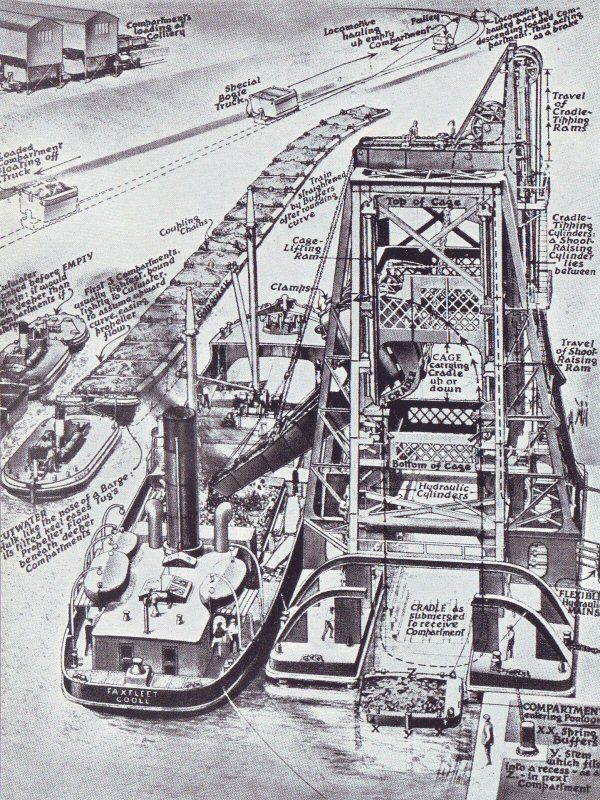
It must not be presumed, however, that coal is the only trade on the canal. Many works alongside the canal network have private wharves. Within the final section of the waterway leading into Goole, for instance, the following are sited on the canal or port: Newbridge Coal Staith (Thorne Colliery); Grindleys Tar Works; Croda Oil Works; Turner Paper Mill Co. Ltd., Hudson, Ward & Co. Ltd. (Flour Mill); Anglo-American Oil Co. Ltd., and the Gas Works.
The considerable volume of traffic that passes through Goole is not handled entirely by the Inland Waterways Executive, however. Although they maintain a large fleet of barges and tugs, and tow their own and privately-owned barges, the many ramifications of the shipping trade have resulted in the growth of freight and shipping agents, who offer specialised services, as mentioned later.
Railway enterprise has also contributed largely to the expansion of the port, particularly as regards the development of trade with near Continental countries, and the steamship services of the Goole Steam Shipping (The Railway Executive) have for long been well known throughout the industrial areas of the Midlands and the North.
Along with other railway owned or services from Hull and Grimsby, the Goole sailings have since 1935 been managed by Associated Humber Lines, and the symbol "A.H.L." on funnel and house-flag is a familiar sight in the docks at Goole.
Regular sailings are maintained with Amsterdam, Antwerp, Copenhagen, Ghent, Rotterdam, Bremen and Hamburg.
All quays and sheds used by the steamers at Goole are equipped with up-to-date appliances for the safe and rapid handling of cargo, and traders can rely upon their shipments receiving prompt and expeditious transit.
Passengers in small numbers are also catered for by the A.H.L. steamers, and travellers to the Continent by this route can enjoy the advantage of 50 miles of water sailing on the Rivers Ouse and Humber before reaching the sea. On the homeward journey, the vessels frequently call at Hull to discharge cargo, before proceeding to Goole and passengers may, if they wish, disembark there.
Credit must also be given to British Railways and its predecessors for their pioneer work in connection with the port of Goole over a period of one hundred years. It was in the 1840s that the Wakefield, Pontefract & Goole Railway, one of the partners in the former Lancashire and Yorkshire Railway, opened its easterly terminus at Goole and so established a direct line of communication between the port and the industrial centres of Lancashire, Yorkshire and the North Midlands for export and import trade.
The Railway Executive, in conjunction with the Docks and Inland Waterways Executive, has brought into being, at Goole, railway and dock facilities equal to the best in the country. The quays are rail-connected and served by many miles of sidings and dock lines to enable wagons to run alongside shipping berths and sheds to facilitate the direct transfer of merchandise between ships and quays. In this way, traffic for export is expeditiously handled in connection with steamship sailings and imported merchandise is loaded into wagons and promptly despatched to all parts of the country by express train goods services.
The quays and sheds are equipped with modern electrical and hydraulic cranes and hoists for the loading and discharge of all kinds of merchandise, including bulk traffic suitable for grabs. Heavy lifts up to 50 tons can be dealt with at the port and other cranes and hoists of 3 tons to 40 tons capacity are available.
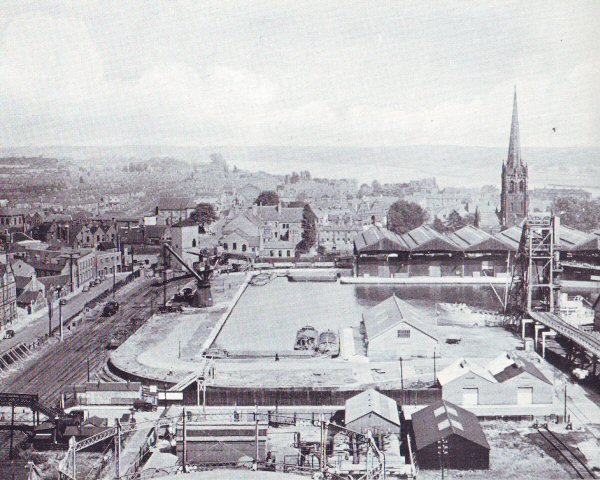
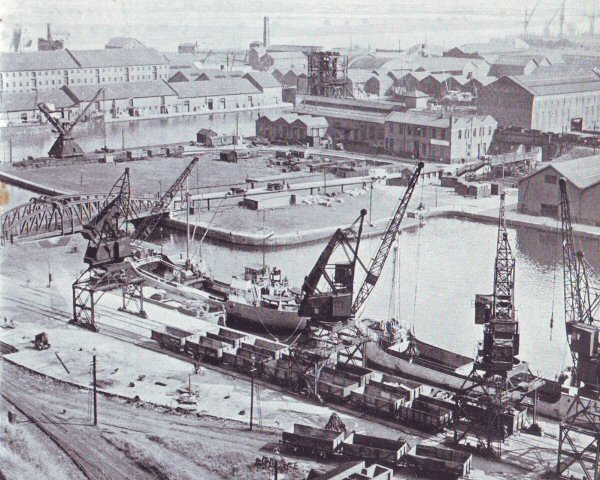
Goole is on the doorstep of the West and South Yorkshire coalfields, and in several docks the Docks and Inland Waterways Executive has high capacity hoists and cranes for the export coal trade, with extensive siding accommodation for dealing with this particular traffic. The port is therefore specially adapted to the requirements of the Continental trade.
The Railway Executive also caters for the trade of the town and district with goods and coal yards and collection and delivery services, whilst special services are arranged for the vegetable traffic during the season.
British Railways have their own goods depots at Goole equipped with warehouse accommodation and extensive sidings where traffic can be dealt with expeditiously and forwarded or discharged and distributed without delay. There is direct rail access to the docks so that wagons can be loaded or unloaded at the shipside.
The favourable geographical situation of Goole gives easy access to the adjacent coalfields of South and West Yorkshire and large quantities of coal for export and landsale are handled expeditiously. Daily goods services are maintained to and from Goole giving connections with express services to all parts and there are adequate cartage facilities to cover the collection and delivery of goods and parcels traffic.
The district surrounding Goole is almost entirely devoted to agriculture and, as the seasons demand, through fast services are provided to meet the needs of the London market.
Steamship Companies & Agents
Messrs. E.P. Atkinson & Sons, shipbrokers and shipping agents, have offices at 3, St. John Street, Goole. This firm also manages the ships owned by the Ouse Steamship Co. Ltd. The latter company, which was founded in 1908 by the late Captain E.P. Atkinson, owns and operates the three steamers, "Faxfleet," "Saltfleet" and "Yokefleet" in the coasting and home trades.
During the war the Company's vessels were trading regularly on the East and South coasts, one ship being mined and lost in 1942. One of the ships managed to get out of Boulogne only about two hours before the Germans entered the port in June, 1940. Another of the Company's ships was engaged as an ammunition carrier in 1944, taking supplies to the Normandy beaches.
All three existing vessels are of the modern collier type, with large hatch- ways and clear holds, suitable for the rapid loading and discharging of coal and other bulk cargoes. They are fitted with aids to navigation such as the Radio Telephone and the Decca Navigator.
A steamship service to the north of France has been operated by the Bennett Steamship Co. Ltd., since 1880, without interruption, except for the war periods. At the present time two vessels run from Goole to Boulogne each week and vice-versa, calling at Hull on the return journey to land fruit and perishable cargo.
This is the fastest and cheapest route from the North and Midlands of England to France, Italy and Switzerland. Modern vessels are on the service, which is augmented by other vessels when and as required, reaching four sailings weekly. Services to Calais and Dieppe are also operated as and when required.
The Company, in addition to being shipowners, act as coal exporters, merchants, shipbrokers, warehousemen, and customs and forwarding agents.
Messrs. Craggs & Jenkin Ltd. are the managers of The Hull Gates Shipping Co. Ltd. who own a fleet of six modern vessels ranging from 450 tons dw to 1,440 tons dw, and they also manage two modern vessels of 700 tons dw and 1,200 tons dw for another owner. These vessels are engaged in the coasting and near Continental tramp trades and are regular callers at Goole, which might be termed their home port.
In addition to the management of the fleet, which is carried out by the Company's head office at Hull, Messrs. Craggs and Jenkin are also shipbrokers and shipping and forwarding agents with branch offices at Goole, Grimsby and Immingham. At Goole they have their own boating and dock pilotage service.
Messrs. T. Ward & Co. Ltd. are agents for Shipping & Coal Co., Rotterdam, who maintain a weekly liner service from Harlingen to Goole and vice versa. This service is the only one between Harlingen and the Humber and is the cheapest route for destined for North Holland. Full-powered motor vessels do the trip in just over 24 hours, leaving Harlingen each Saturday noon and arriving at Goole for discharging Monday morning. The vessel returns to Harlingen on the Wednesday morning carrying goods destined for North Holland.
The company handle all classes of merchandise but the main inward traffic consists of dairy produce - milk, butter, cheese and eggs, also strawboards, farina and perishable goods such as shell fish and fruit. Through rates are quoted from mill or factory in Holland to delivered domicile England by road, rail and canal and the company have their discharging berth and dock warehouse, and an efficient forwarding organisation to deal expeditiously with the Customs clearance and dispatch of the goods. Their principals - Shipping & Coal Co., Rotterdam - are large importers of coal, etc. and the company consequently deal with a fair amount of coal export from Goole, in addition to the general car trade.
Lep Transport Limited, a world-wide organisation, has made good use of the possibilities offered by Goole on account of its excellent geographical position, and has created an organisation with expert staff and physical facilities to cater with speed and economy for every need of the manufacturing importer and exporter. With ten premises in the town and docks, including ample storage space, shipping berths, lighters, cranes and adaptable handling gear of all kinds, Lep Transport Limited is well equipped for its prominent share of the shipping trade between Goole and the Continental ports of Copenhagen, Rotterdam, Amsterdam, Antwerp, Ghent, Hamburg, Boulogne and Delfzijl. It owns a large fleet of up-to-date motor vehicles of all sizes, which are collecting and delivering merchandise daily in all important towns, the lorries being maintained and serviced in its own repair shops. The outstanding features of this organisation are its completeness. It not only offers an all-in transport service, including ship chartering and brokerage and extensive packing works, but it does so on its own resources and therefore with greater efficiency and dependability, employing 300 workers.
A regular service by a fleet of motor-barges between Goole, Hull and the various points of discharge on the Docks & Inland Waterways (N.E. Section), is maintained by Messrs. W. Bleasdale & Co. Ltd.
Principal commodities carried are grain for the mills in Sheffield and other food stuffs, iron and steel, ferro-alloys and moulding sand for the steel works in the Sheffield area, and machinery parts.
Large tonnages are carried in a reverse direction, including coal from the various staithes to the mills in Hull and also for shipment abroad from Goole; manufactured steel, tractors and other agricultural machinery for export.
G.D. Holmes, Ltd. are motor barge, tug and keel owners, and offer many port services.
The firm of G. D. Holmes, Ltd., 44 Aire Street, Goole, is engaged in the carriage of mainly mineral bulk cargoes from the Humber ports to chemical works on the canals in the West Riding of Yorkshire, and to fertiliser works at Goole, Keadby and York. The traffic is composed mainly of sulphur, pyrites, phosphate, potash and fertilisers, sampling, superintending and weighing being undertaken when necessary. With a fleet of twenty-seven vessels (motor barges, motor and steam tugs and steam keels fitted with Priestman grabs), a towage service is maintained in the Rivers Humber and Ouse, and sand is dredged from the river. A number of salvage pumps are also available and salvage and dredging work is carried out by experienced staff.
A subsidiary company "Goole Fresh Water Boat Co. Ltd." have two water boats in Goole Docks and undertake the supply of fresh water to steamers using the port.
Other firms of shipping agents and brokers include Atkinson & Prickett, Ltd., and T.E. Kettlewell & Son, Ltd., who have also a substantial Stevedoring business through their subsidiary company.
| Imports - Port of Goole | Tons (1949) | Tons (1948) |
| Building and Road Making Material (other than timber) | 5,500 | 249 |
| Iron and Steel and Machinery (including Scrap) | 105,428 | 38,102 |
| Fruit and Vegetables | 3,585 | 8,233 |
| Farina | 10,784 | 4,524 |
| Fertiliser, etc. | 13,341 | 13,618 |
| Sand | 72,431 | 62,451 |
| Strawboards | 20,270 | 17,660 |
| Sugar | 10,360 | 10,054 |
| Timber (Excluding Pitwood and Mining Timber) | 2,395 | 0 |
| Wool, etc. | 19,394 | 35,355 |
| General Merchandise | 55,604 | 46,288 |
| 319,092 | 238,505 |
| Exports - Port of Goole | Tons (1949) | Tons (1948) |
| Iron and Steel and Machinery | 33,054 | 11,271 |
| Creosote | 7,203 | 10,080 |
| Pitch | 35,161 | 55,403 |
| Refined Tar | 6,000 | 9,615 |
| Wool, etc. | 15,651 | 3,552 |
| General Merchandise | 32,548 | 68,848 |
| Coal and Coke | 1,234,993 | 927,984 |
| Vegetables | 0 | 5,699 |
| 1,364,610 | 1,092,452 |
| Total Imports and Exports | 1,683,702 | 1,330,957 |
| No. of Vessels arriving | 2,455 | 1,994 |
| Net Register Tonnage | 791,285 | 647,630 |
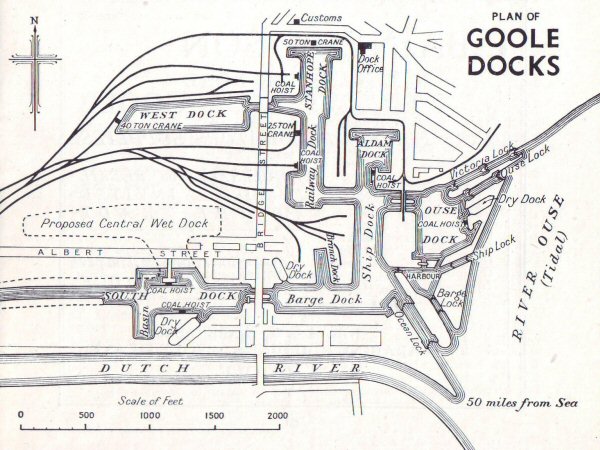
The Municipal Borough
The first step on the road to government as it is known today was taken by Goole in 1875, when the first Goole Local Board was set up. By arrangement with the Aire and Calder Navigation, the gas and water undertakings were taken over, and the responsibility for the sewerage system accepted. The occasion was an historic one, for it marked the beginnings of public control of local affairs. In 1894, the Local Board became an Urban District Council, and, in 1933, Goole was granted a charter of incorporation as a municipal borough.
From 1875 onwards, there was a gradual improvement in conditions, and expansion of public control. The twenty-five miles or so of roads within the town were made up and paved, and street lighting by town gas extended beyond the Aire and Calder Navigation Estate to the remainder of the town. Under the 1919 Housing Act, 47 municipal houses were erected in Brough Street, Mond Avenue, New Close Lane and Westfield Avenue. In 1924, 24 houses were built in Pasture Avenue and Westfield Avenue, and, between 1925 and 1939, 843 houses and 28 flats were built in Marshfield, Westfield and Old Goole. Of these, 55 houses were sold.
Since 1946, 262 houses and 56 flats have been erected. Today the Council owns 1,121 houses and 84 flats. A further 58 houses and 8 flats are in the course of erection. These are attractively laid out with gardens and tree-lined roads with grass verges. Some of the property consists of flats for old persons. The Council is at present developing estates at Moorfields and Western Road.
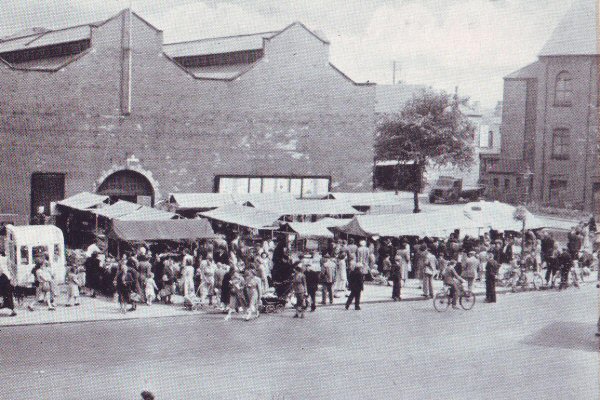
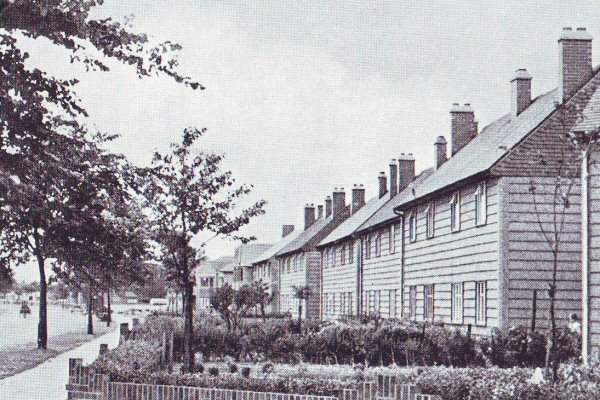
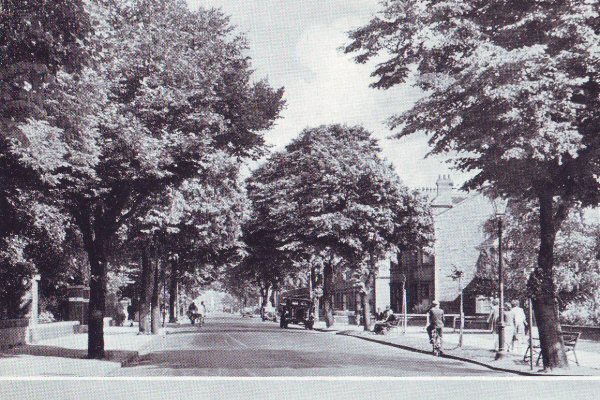
Until 1929, the first free unrestricted road bridge over the Ouse was at York, and a bridge over the Ouse near was mooted for many years before it became an accomplished fact. The Goole Urban District Council was one of the prime movers, and had the pleasure of seeing the bridge over the Ouse at Boothferry completed in 1929. It reduced the road distance from Goole to towns of the East Riding by 28 miles, and has proved to be a far-sighted economy.
Excellent health services have been developed by the Council and these continue to serve the Borough although some are now under different management. Generally speaking, the fine services offered today by local authorities everywhere are taken so much for granted that we might have had them for centuries. Yet they are almost entirely the result of progressive ideas by local authorities and medical men during the last 35 years.
In 1915, Goole opened its first Child Welfare Centre at 33 Victoria Street, partly as a result of discoveries, by a health visitor, of almost unbelievable ignorance of the care of children. The Council opened a Maternity Home in 1926 and built a commodious and well equipped Maternity and Child Welfare Centre in Bartholomew Avenue, in 1938.
In conjunction with the Goole Rural District Council it maintained a joint Isolation Hospital from 1910 to 1948. The Maternity Home and Isolation Hospital, along with the Bartholomew Voluntary Hospital and the St. John's Hospital, were taken over by the Leeds Regional Hospital Board on the 5th July, 1948, and the Maternity and Child Welfare Centre by the West Riding County Council, which had previously also provided the Health Service, Tuberculosis Dispensary, V.D. Clinic, Domiciliary Midwifery Services and the Ambulance Service.
Many of the modern sanitary services are still provided by the Council and the Health Department is responsible for a wide range of activities including the inspection of houses, public abattoirs, shops, dairies, cow-sheds, common lodging houses, factories and workshops, etc., and the analysis of water and food.
Health education and the extermination of household vermin and rodents are also carried out by the Department. All the health and sanitary services in the Borough operate at a high level of efficiency.
Goole has had a market since the day on which its first ship bound for the continent cleared the port in 1826. Then it consisted of stalls in the market place, but a building between Adam Street and Ouse Street later afforded better facilities for both stall-holder and customer. An imposing market was erected in 1876, and in it the Local Board had its offices, but it was destroyed by fire in 1891, and all the documents belonging to the Board, except those in the safe, were destroyed. The existing market was erected in 1896, and has entrances in Boothferry Road, and Estcourt Terrace. It covers an area of 7,327 square feet and accommodates 104 stalls, which are thronged on Wednesdays and Saturdays, the market days.
Electricity has recently been installed, heating provided and the Hall redecorated. Another improvement is the replacement of wooden stalls by a modern aluminium type of stall.
Growing civic consciousness was shown in the erection in of Goole's first Public Baths. They did good service until 1936, when they were replaced by a modern building in Pasture Road, known as the Goole Municipal Baths. The building comprises a swimming pool, dressing rooms, slipper and remedial baths, laundry and refreshment room.
The swimming pool is 100 feet long by 30 feet wide, with a minimum depth of 3 feet and a maximum depth of 7 feet. To gain access to the pool, bathers of both sexes are obliged to walk from their respective dressing rooms through the warm pre-cleansing showers and foot baths. The filter and chlorination plants ensure a complete change of bath water every four hours, of a standard to conform with the Ministry of Health requirements. The hours of opening are:
- Summer - 8am to 8pm - All departments
- Winter - 1pm to 7pm - Slipper and Remedial Baths only
During the winter months, the main bath hall is converted to a public hall with a floor space of 114 feet by 46 feet. A stage of ample area with proscenium is provided, together with a large refreshment room and a balcony to seat 200 persons. The hall is eminently suitable for dances and social functions.
In those early years of development, educational facilities were in the care of the Goole School Board, which continued until the schcools were taken over by the West Riding County Council under the provisions of the Education Act, 1902.
At the beginning of the century, there existed a private "Grammar School" for boys, and also grammar schools at Fockerby and Howden (endowments from which provide scholarships at the Grammar School today). But education proper came to Goole in 1904 with the establishing of the Secondary School for Girls. Not until 1909 did the boys have a secondary school, when the Secondary School for Boys and Girls superseded the girls' school. The name Grammar School was adopted in 1933. The school is attractively designed and well situated in spacious grounds, and stands as an obvious tribute to the efforts towards better education for which the original School Board strove so mightily.
The old School Board had the privilege of introducing "further education" to Goole in about 1896. When the West Riding County Council assumed responsibility for education, however, the organisation of evening classes was delegated to a special committee of the Goole Urban District Council. Their efforts finally resulted in the establishment of the "Goole Technical Institute," which still functions under that name. Detailed information on present-day educational facilities is given later.
Side by side with education were naturally required the means of self-education and recreation. The Public Library, adjoining the Tower Theatre, Carlisle Street, was opened on 13th March, the site having been provided by Ralph Creyke and the expense of erection defrayed by the Carnegie United Kingdom Trustees. There are Lending and Reference Departments, a Reading Room and a Lecture Hall.
Any person over the age of nine years who is resident or rated with respect to property within the Borough area, or, by arrangement with the West Riding County Library, the parishes of Airmyn and Hook, may borrow books free of charge. Persons employed, and children attending school, within the area may also become members. An extra ticket, available for non-fiction only, is issued on application to readers over fourteen years of age. Visitors to the Borough may use their home library's reader's ticket for short periods. For those not in any of the above-mentioned categories an annual subscription of five shillings per ticket is charged.
The Reading Room is open every weekday from 9am. to 8pm., and the Lending and Reference Departments from 10am. to 8pm. (except Tuesdays - 10am. to 1pm.). A branch library is open every Tuesday evening from 5:30 to 7 in the Old Goole County School (Cottingham Street entrance).
The bookstock, totalling 19,089 volumes, compares favourably with that of libraries serving towns of similar population and comprises fiction of all types and non-fiction - religion, history, biography, travel, science, engineering, arts and crafts, hobbies, sports, etc. A selection of current periodicals and daily papers are displayed in the Reading Room. The junior section of the Lending Department contains a stock of over 2,500 volumes suitable for children of nine to fourteen years of age.
Certain books which are not in stock may be borrowed through the inter-lending scheme of the Yorkshire libraries, the Regional Library Bureaux and the National Central Library in London. The West Riding County Library voluntarily supplements this scheme, particularly where several copies of a work are needed for group activities.
Goole's first public park was laid out on a three-acre site between Hook Road and the river in 1914-15, facilities provided including bowling green, bandstand, pavilion, shelter and conveniences. After the 1914-18 war, a public subscription was raised to provide a suitable war memorial, which took the form of a memorial set in laid-out gardens. Plaques with the names of those who lost their lives in the 1939/45 war have recently been fixed on the Memorial. The site between the Grammar School and Bartholomew Avenue was given by the Aire and Calder Navigation, and a bowling green, shelter, and conveniences were also included in the scheme. That was in 1922 and in 1923 Goole's largest park, West Park, came into being on a site in Airmyn Road. It covers an area of more than 32 acres and cost approximately £15,500. This was a large sum for those days, but the facilities provided were most ambitious - bowling green, tennis courts, cricket, football and hockey pitches, paddling and model yacht pool, and children's playground, as well as conveniences, bandstand, shelters and tea-room. When the late Duke of Kent (then HRH. Prince George) visited Goole in 1933, he planted an oak tree in the park.
Old Goole was also provided with a park in 1923 on a site off Swinefleet Road. This park, known as the South park, has a bandstand, shelter, conveniences, paddling pool, bowling green, tennis courts and football pitches.
The Victoria Pleasure Grounds are also public property, acquired in 1933, although they fulfil a different purpose. Few towns of the size of Goole possess such a fine sports arena.
Public buildings, parks, houses and industries, however, do not make a town. The stature of a town can only be as great as the character of its people. The spirit of a town may be an intangible thing, yet it is very real, readily recognisable. It is reflected most, perhaps, in local organisations and associations, business, religious and political. A list will be found under the heading General Information so that the reader may form his own impression of the social and recreational life of the town.

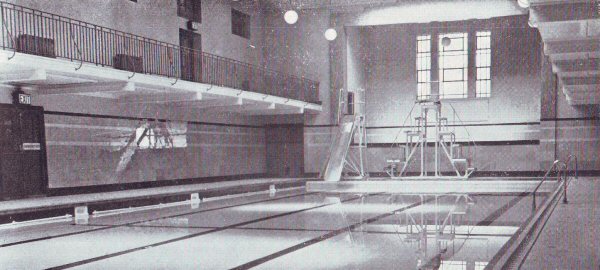
Public Utility Services
Electricity
The Yorkshire Electricity Board, No. 6 (Hull) Sub Area is the authority responsible for the supply of electricity for domestic and commercial purposes in the borough. For lighting and domestic purposes tariffs are in operation designed to meet the needs of every type of consumer.
These include:
- Residential Tariff (No. 200). 1d for each of the first 50 units per per room and ¾d for each additional unit and a fixed quarterly charge of 9/- for three rooms or less, 3/- for each additional room. Attics not used as bedrooms, bathrooms, halls and passages, dressing room attached to bedrooms, cellars, pantries, domestic wash houses and garages are not chargeable.
- Lighting Tariff (No. 100). For dwelling houses and business premises. Rate 5½d per unit. Meter rent from 1/6 per quarter.
- Domestic Tariff (No. 101). In premises where a supply of electricity is used for lighting purposes under tariff No. 100 a separate supply for domestic purposes other than lighting is charged for at the following terms: 1½d for each of the first 160 units for quarterly period and 1d for each additional unit for quarterly period.
Meter rents from 1/6 for quarterly period.
Sub Area Headquarters: Ferensway, Hull. Tel. 16160. Local Office, Mariners Street, Goole. Telephone 518.
Gas
Gas is supplied by the North Eastern Gas Board to the borough, the parish of Hook and part of the parish of Airmyn. Scale of charges (ordinary meters):
- Domestic. 14.50d per therm consumed up to the standard requirement; 10.81d per therm for next 13.80 therms; 9.94d per therm for all further consumption (the standard requirement ranges from 7.20 therms to 24.00 therms according to the floor area of the living rooms).
- Other users (other than lighting, ordinary meters) 14.5d per therm. Central heating (ordinary meters) 10.15d therm.
Water
The Goole Corporation are statutory Water Undertakers, their water being obtained from deep bore-holes at Pollington in the New Red Sandstone formation about ten miles west of Goole. It is a Class I water (Ministry of Health standard) and has about 10 degrees of hardness (Clark's scale). A ferro-concrete water tower of 750,000 gallons capacity, the bottom of the tank of which is about 120 feet above ground level, provides a very good pressure in the mains.
Supplies by meter for industrial purposes are charged at 1/- per 1,000 gallons in the Corporation's statutory area of supply which includes the borough and the parishes of Hook, Airmyn and Rawcliffe in the rural district. The charges for domestic supplies are based upon Gross Estimated Rental as follows:
Gross Value not exceeding £60 @ 6½% per annum, £61-80 incl. @ 6% per annum, £81-100 @ 5½% per annum, over £100 @ 5% per annum (Paid quarterly in advance). Minimum Charge 2/2 per quarter.
A Review of Industry
For more than a hundred years Goole's industrial history has been closely linked with the sea. As the most inland port on the east coast, 50 miles from the mouth of the Humber, it has developed to its present size and importance because its geographical position determined that its predominant industrial characteristic should be its docks undertaking. The docks and the waterfront of Goole have always played an important part in the industrial life of the town and the surrounding area. It is true that largely because of the depressing effect of the war years, is no longer the thirteenth port in the United Kingdom in the value and volume of traffic. But there is a significant and continued upward trend in its total of imports and exports. Coal shipments in 1949, for example, totalled over a million tons for the first time since 1939, and in 1950 the month-by-month trade statistics showed further increases.
For the first 50 years of Goole's industrial development the docks, with their ancillary trades, were the town's lifeblood. And yet, as road and rail communications were developed and as the town itself grew away from the docks, there arose the need for industrial development that would provide employment for the thousands who could not be readily absorbed on the waterfront.
Throughout the years it has been Goole's ideal geographical position that has attracted many firms to the town. An important alum works, established nearly a hundred years ago, was the first heavy industry to find Goole a natural site, and thereafter the heavy industrial area centred on the docks continued to flourish. Ship-building and ship-repairing, fertiliser and dextrine manufacturing, as well as flour-milling all owe their existence to the port, which is the hub of a closely-linked system of road, rail and water communications. These were natural developments, born out of the docks themselves; but as the population grew so the demand for other industries became greater, so that could keep its employable population at home. Agriculture, naturally, absorbed many, for Goole is the centre of a fertile belt of land, and it was this community of interest between town and country that prompted the Goole Corporation, with the support of the Goole Rural District Council, to establish a light industrial estate partly within and partly outside the town's western boundary.
Within the last few years four firms have already been established on this industrial site. During 1949, until the abrupt end of the Local Government Boundary Commission, the Corporation and the Rural Council, worked closely together to present joint proposals which, had they become effective, would have extended the boundary of the Borough to include a nearby village. It was with this proposal in mind that the Borough Council received approval to extend the industrial estate by the acquisition of an additional twelve acres of land adjoining the existing sites. Plans for an extension of the Borough boundary have had to be shelved by Government decree for the present, but the development of light industries continues to be in the forefront of the Borough Council's policy.
The opening in 1949 by the Princess Royal of a clothing factory on this site solved the town's growing problem of female labour, and there is today virtually no female unemployment in the district. Nevertheless, the Council continues in its endeavours to attract further light industries to this estate, and it is more than likely that a canning factory will become the fifth new industry to be established in the Goole area during the last decade.

The efforts of the Borough Council have never relaxed, and when the clothing factory immediately absorbed over 500 women and girls, with the likelihood of employment for several hundreds more as the factory extended, the Goole Development Committee, encouraged by the Corporation, immediately turned its attention to the question of providing employment in light engineering for some of the male population of the area. Many of these, within the last three years, have had to leave their native district for the Midlands because of the lack of that type of work in Goole.
From a village of 450 to a town of 20,000 in less than a century and a half is, by any standard, a flourishing growth. But most of the rapid expansion in population was achieved in the 75 years after 1826, when Goole was granted a charter as a port for foreign trade. Goole's original industrial prosperity was founded on the export of coal, for, as the nearest port to the West Riding coalfields, it could handle their output more cheaply than any other port in the country. But now, with the country's port system under a nationalised executive, Goole's continued industrial expansion as a port is no longer a matter to be handles by private companies of dock and ship owners. And so, wisely, the authorities of Goole and district, while continually pressing Goole's claims as a port, are planning for further development in other industrial fields. They are meeting with sufficient success to make possible the forecast that the town's population will again begin to rise rapidly within the next few years.
It is not possible in the space available here, to describe in detail all the industries to be found in Goole. The history of most industrial enterprises makes interesting reading, however, and in the following pages will be found details of a representative cross-section of local trades.
Shipbuilding and Repairing
Over 700 men are employed by the Shipbuilding and Repairing Co. Ltd. who, since the foundation of the firm in 1907, have built over 430 ships. In its early days the shipyard was situated on the Barge Dock side and the ships were launched into the Dutch River. The Yard was moved to its present site in 1914 and now covers an area of about 9-10 acres.
There are seven building berths suitable for building vessels up to 350 feet long. The Yard is equipped with the most modern machinery and the berths are laid out with electric travelling cranes for lifting up to 10 tons. All the berths are equipped for electric welding and a considerable amount of pre-fabricated work is carried out.
Also associated with the Shipbuilding and Repairing Company Limited are Messrs. Brown's Ship-building and Dry Dock Company Limited, Hull, and Messrs. Clelands (Successors) Limited, Willington-Quay-on-Tyne.
Established in Hull in 1885, Messrs. Harrison & Doughty Ltd. have always held a prominent place amongst firms painting and scaling and repairing ships in that port. In 1942 the firm took over the L.M.S. Marine Engineering Works in Bridge Street, Goole, and since that time they have covered a large and varied field of activity.
During the whole of the war period they were engaged in ship repairing and Admiralty work, in addition to which a large volume of specialised and secret work was carried out for the Ministry of Supply and other Government Departments, in connection with the building of tanks and other military equipment.
Since the cessation of hostilities a steady flow of ship and engine repairs has been undertaken, together with a large amount of steel structural work and engineering shopwork in connection with dock and rail machinery and for the Railway Executive. Installations and repairs for authorities and factories have also continued to be an important feature.
In the shipping and industrial undertakings, which the firm serves, emergency repairs and breakdowns occurring from time to time have called for resourcefulness and adaptability, and a special endeavour is always made to get vessels to sea or the wheels turning again with the minimum of delay.
Other firms engaged in this work are Messrs. Smith Bros., shipwrights, boat and launch builders, ship surveyors, etc., and Messrs. C. Campling (Goole) Ltd., Ship Repairers and Marine Engineers.
Flour Milling
Messrs. Hudson, Ward & Co. Ltd., commenced flour milling in Goole in 1885. The firm has its roots in Conisborough, where a small water mill was run by Mr. T.F. Hudson and his brother.
Later a new mill was built at Goole and this began production in 1885. In those days capacity was much smaller than that of today, and only one shift was worked. Trade developed and it was found that there was a good market for flour and its by-products in the Leeds area with the result that a mill was acquired in Sovereign Street, Leeds, largely for distributive purposes. Practically all the flour destined for Leeds was transported by canal During these years the mill at Goole was developing steadily in size. The firm weather a most difficult period in the 1920s and 1930s when, due largely to over-production on a national scale, cut-throat competition developed, and many small mills were compelled to close down.
With more stable times, the erection of a provender mill at Goole was the next step forward, followed by the building of a silo just before the recent war. The war itself brought many complications to milling, not the least being the necessity to mill to a high extraction rate, resulting in dark flour. The industry was, and still is, having to work under wartime conditions. Since the war much re-modelling and replacement of plant has been completed, some of the most modern machinery having been recently installed. In 1949, steam was replaced by electricity as the means of power.
Paint Manufacturing
Among the products of Croda Ltd., of Snaith, are rust preventives which are known throughout the engineering world. The Croda organisation came into being in 1925, the founder and chairman being Mr. G.W. Crowe - hence the name Croda.
Originally the basic product was lanolin, which is extracted from wool-grease during woolscouring. Largely owing to the research and development of the Croda laboratories, lanolin has now been split up into a host of important derivatives. These include bases for many pharmaceutical and cosmetic products and emulsifiers with a wide field of industrial applications. More recently, it has been possible to introduce the important wax alcohols in a water soluble form, representing a most important step forward from the manufacturing standpoint.
For many years lanolin has been recognised as a highly efficient rust preventive. Since the war the Croda organisation has been among the pioneers in developing plastics as anti-corrosive preparations, which have revolutionised the whole technique of rust prevention.
Shortly before the war Croda paints first appeared on the market. This section has now been developed and a complete range of industrial, agricultural and decorative finishes leave the Croda works each week.
Fertilisers
Fisons Limited, Harvest House, Goole, part of the large organisation of fertiliser manufacturers with its head office at Ipswich, have extensive premises on the River Don at Goole, where they manufacture sulphuric acid for the production of superphosphate and compound fertilisers. A large modern granulating plant has recently been installed with a capacity sufficient to supply a wide area in the West, East and North Ridings of Yorkshire with compound fertilisers in the granulated form, now so much in demand.
The firm also have a subsidiary works situated on the river Trent at Keadby, Scunthorpe, from which the North Lincolnshire area is supplied. Raw materials are imported from abroad through Goole, and the manufactured products distributed by road, rail and ship.
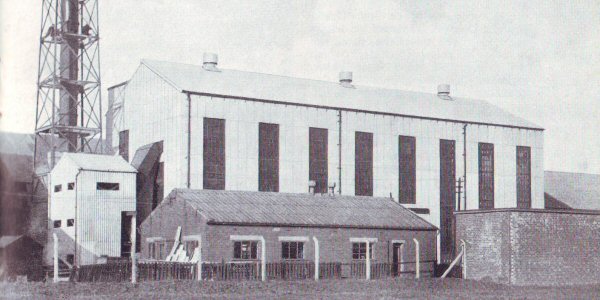
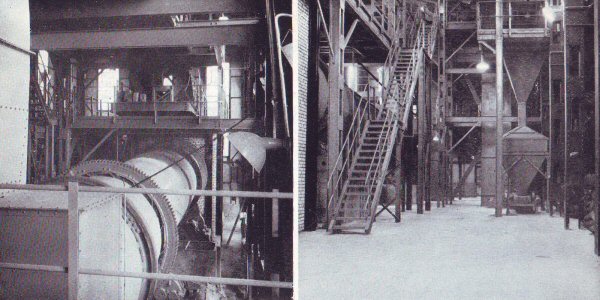
Mineral Waters
A long established industry in Goole is the manufacture of mineral waters, etc., carried on by Messrs. Walter Short (Goole) Ltd., of First Avenue.
About 1870 Mr Edwin Short, grandfather of two of the present directors - Mr. Walter Short and Mr. Edwin Short - built the factory for the manufacture of soft drinks and the bottling of beers, stout and cyder, in First Avenue, its chimney a well-known landmark. Before 1870 the history of the firm is rather obscure, but it is known that the founder of the firm started a soft drinks business in Church Street, later going into partnership with Mr. Spilman of Marshland Road. Mr. Edwin Short then transferred his business to First Avenue, when the partnership was dissolved.
In 1895, the firm was awarded a Silver Medal at the Brewers' Exhibition, London, for its product Dandelion and Sarsparilla. From that time onwards, Shorts' mineral waters have been famed for their excellence and superior quality. All the ingredients are personally tested by the management, fruit juices being used from all over the world to impart that fruity flavour for which Shorts' mineral waters are noted. Shorts are also well known for their bottling of Guinness Extra Stout (Harp Label) and other famous beers, and cyders.
Mineral waters are also manufactured by Messrs. Cowells of Carter Street. Another well-known local firm is that of Messrs. W.M. Darley Ltd., brewers, of Thorne.
ABC of Local Information
Mayor:
Ald. Thomas Fearnhead, 140 Centenary Road
Deputy Mayor:
Coun. J.F. Chambers, "Renescure," Airmyn Road
Aldermen:
Bevan, S.G., O.B.E., J.P., 42 Burlington Crescent
Hudson, V.B., Vernon House, Swinefleet Road
Johnson, E., J.P., 57 Clifton Gardens
Olley, R., 29 Victoria Street
Councillors:
Airey, J.W., 56 Colonels Walk
Clark, G.E., 112 Centenary Road
Crawford, Mrs. J.G., 13 Burlington Crescent
Daniels, T.J., 5 Jacksonville
England, Mrs. E.L. , 176 Centenary Road
Gash, H., 52 Colonel's Walk
Gosney, F.W., 7 Chestnut Avenue
Gunnill, J.T., 13 Mond Avenue
Kelbrick, J.J., 118 Centenary Road
Kitwood, F., 59 Dunhill Road
Medcalf, G.T., J.P., C.C., 8 Colonel's Walk
Moody, A., 30 Mond Avenue
Norman, G.I., 12 Salisbury Avenue
Oldridge, R.J., 31 Aire Street
Sherburn, L, 36 Fountayne Street
Taylor, A., 128 Morley Street
Wadsworth, C.P., "Ashfield," Hook Road
(One Vacancy)
Chief Officers:
Town Clerk, Solicitor to Corporation, Clerk to Goole Joint Burials Committee: K.H. Chorlton, L.L.B
Deputy Town Clerk: A. Lazenby
Borough Surveyor and Water Engineer: Thos. Waterfall, M.I.Mun.E.
Borough Treasurer and Rating and Valuation Officer: W.E. Dulson, F.I.M.T.A.
Medical Officer of Health: S. Kennaugh Appleton, M.B., Ch.B., M.D., D.P.H., D.T.M.
Senior Sanitary Inspector: R. O Black, Cert. S.I.B., M.S.I.A.
Public Librarian: A. King, A.L.A.
Baths Supt.: W. Agar
Market Supt.: W. Wood
Administration:
Goole is a municipal borough with an estimated population of (Dec. 1950) and an area of 1,267 acres. It is governed by a council of six aldermen and eighteen councillors. The Municipal Offices are in Stanhope Street, and accommodate all the departments of the Corporation.
Bus Services:
The Blue Line, Reliance and Majestic Motors run a joint daily service between Goole and Doncaster.
Messrs. J. Bullock & Sons (1928) Ltd. (B & S) run a daily service between Goole and Leeds via Selby, and the West Riding Automobile Co. Ltd. run a daily service between Goole and Leeds via Pontefract and also a Saturday only service between Goole and Pollington.
East Yorkshire Motor Services run daily services between Goole and Hull, and between Goole and Bridlington, Filey and Scarborough.
The "Advance" Motor Service runs daily services between Goole and Scunthorpe and between Goole and Gainsborough.
The "Ben" Green Bus Service runs daily services between Goole and Crowle and between Goole and Swinefleet.
Enterprise (Scunthorpe) Passenger Services Ltd. run daily services between Goole and Scunthorpe, Goole and Howden, Goole and Ousefleet and Goole and Swinefleet. This Company also runs a Town Service, and a Service between Goole and the neighbouring village of Hook.
The Imperial Bus Service runs a Wednesday and Saturday only service between Goole and Barmby via Howden.
Cinemas:
Tower, Carlisle Street; Cinema Palace, Boothferry Road; Carlton, Boothferry Road
Clubs, Associations, Institutions, etc.
Clubs:
- Goole Conservative Working Men's Club, Carlisle Street
- The British Legion, Pasture Road
- Goole Working Men's Club and Institute, Victoria Street
- Old Goole Working Men's Club, The Gables, Swinefleet Road
- Railway Club and Institute, Carter Street
- "Over 60" Club, Victoria Street
Hospitals, etc.:
- Goole, Howden and Selby Hospital Management Committee - Secretary, E. Cusworth, St. John's Hospital, Boothferry Road, Goole, for
Bartholomew Hospital
St. John's Hospital
Isolation Hospital
Goole Maternity Hospital - Goole Friendly Society, Medical Union, Belgravia
- Goole T.B. After-Care Committee - Secretary, E. G Broadhead, 7 Marshfield Road
- St. John Ambulance Brigade (Goole Division) - Secretary Coun. T.J. Daniels, 5 Jacksonville
Sport and Pastimes:
- Goole Chess Club - Secretary, D. G. Avery, 31 Fifth Avenue
- Goole Town Athletic Fcxjtball Club - Secretary, L. Phillipson, 12 Western Road
- Goole and District Bowling Association - Secretary, W.T. Donnelly, 4 Newclose Lane
- Goole Wheelers Cycling Club - Secretary, C. Guest, 27 Hook Road
- Goole Town Cricket and Lawn Tennis Club - Secretary, L. A. B. Pearce, 6 Stanhope St
- Goole and District Photographic Society - Secretary, J. H. Crabtree, 39 Marshfield Road
- Grammar School Old Boys R.U.F.C. - Secretary, S. Beaumont, 3 Belgravia
Educational:
- Goole Amateur Operatic and Dramatic Society - Secretary, F.H. Pickard, 37 Westfield Avenue
- Goole Music Circle - Secretary, J. N. Abram, 31 Hook Road
- Workers' Educational Association - Secretary, H. Lister, 11 Shaftesbury Avenue
- Goole Historical Association - Secretary, Miss M.E. Bell, Grammar School
- National Union of Teachers (Goole Branch) - Secretary, Coun. A. Moody, 30 Mond Avenue
- Grammar School Old Pupils' Association
- Goole Grammar School Parent-Teachers' Association - Secretary, E. Butler; 37 Marshfield Road
- Goole Pasture Road School Parents' Association
- Goole Modern School Parents' Association
Political:
- Conservative and Liberal Association
- Goole Labour Party - Secretary, E.V. Everest, 25 Adeline Street
Commerce and Shipping:
- Goole Chamber of Commerce and Shipping - Secretary, J.W. Watson, St. John Street
- Goole and District Chamber of Trade - Secretary, N. Garside, 2 Pasture Road
- Goole Steamship Owners' Association - Secretary, J.W. Watson, 8 Mond Avenue
- Goole Mutual Plate Glass Insurance Association, Carlisle Chambers, Carlisle Street
General:
- Goole Smallholders' and Allotments Association - Secretary, G. Ripley, 5 Broadway
- Goole and District Domestic Poultry and Rabbit Keepers' Club - Secretary, H. Dixon, 70 Adeline Street
- Goole Branch of the National Farmers' Union - Secretary, W. Scott, Upleatham, 64 King Edward Road, Thorne
- New Pig Club - Secretary, Wm. Cowling, 64 Jackson Street
- Old Goole Pig Club - Secretary, J. Smith, 79 Swinefleet Road
- Goole Y.M.C.A., North Street
- Goole Borough Band - Secretary, F. Gray, 25 Lime Tree Avenue
- Goole and District Sunday School Union - Secretary, Miss E. M. Dews, 117 Pasture Road
- Goole and District National Savings Committee - Secretary, L. Walker, Hull Savings Bank, Goole
- Goole and District Local Association of Boy Scouts - Secretary, N. Garside, 2 Pasture Road
- Goole and District Photographic Society - Secretary, J.H. Crabtree, 39 Marshfield Road
- The Rotary Club of Goole - Secretary, H. S. Walker, 19 Fountayne Street
- The Inner Wheel Club of Goole - Secretary, Mrs. H. Fawbert, 27 Salisbury Avenue
- Business and Professional Women's Club, Goole Branch - Secretary, Mrs. Martin, 59 The Green, Rawcliffe
- W.V.S. - Organiser, Coun. Mrs. E.L. England, Boothferry Road, Goole
- Good Neighbours' Club - Secretary, Mrs. M. G. Parsons, 12 Bournville
- Goole Branch of the Royal Artillery Association - Secretary, A. H. Kirby, 19 Airmyn Avenue
- Goole Branch of the K.O.Y.L.I. Regimental Association - Secretary, T. Rose, 11 Mendip Avenue
- Goole Branch of the Royal Air Forces Association - Secretary, l. Patchett, 18 Chestnut Avenue
- Sea Cadet Corps (Goole Unit No. 412) - Secretary, A. E. Rowley, Municipal Offices
- Old Goole Gala Committee - Secretary, H. Beevers, 9 Swinefleet Road
Friendly Societies:
- Manchester Unity Order of Oddfellows (1) Good Samaritan Lodge, (2) Good Shepherd Lodge: Gilberdyke and Florence Female Lodge, (3) Standard of Freedom Lodge, (4) Perseverance Lodge; Lily of the Valley Lodge; Free Gardeners, Aire and Calder Lodge; Ancient Order of Foresters' Court Port of Goole; Sons of Temperance, Hope to Prosper Division; R.A.O.B. Goole and District Provincial Grand Lodge; National Catholic Benefit and Thrift Society; National Deposit Friendly Society.
Freemasons:
- Aire and Calder Lodge No. 458 on the Register of the Grand Lodge of England, Province of West Yorkshire
Trade Societies:
- Shipping Federation - Secretary and Registrar, W. Shay, 13 East Parade
- Transport and General Workers' Union - Secretary, H. Gash, 50 Aire Street
- National Union of Railwaymen
- Joiners' Society
- National Union of Seamen - Secretary, J. McAulay, 5 Aire Street
- Railway Clerks' Association - E. Gibson, 18 Woodland Avenue
- National Union of Distributive and Allied Workers
- Locomotive Enginemen and Firemen
- Amalgamated Society of Paper Makers
- Painters' Society
- National Union of Printing, Bookbinding and Paper Workers
- Amalgamated Engineering Union
- Boiler Makers' Society
- Shipwrights' Society
- Association of Employers of Dock and Riverside Labour at the Port of Goole - Secretary, D. Taylor, Stevedores (Goole) Ltd., 8 East Parade
- Goole Coal Trimming Conciliation Board - Secretary. W. Shay, 13 East Parade
- Goole and District Grocers' and Bakers' Association - Secretary, G. Ramsay, 5 Marshfield Avenue
- Goole and District Licensed Victuallers' Association - Secretary, T. Smith, Ship Inn, Swinefleet
Custom House:
Stanhope Street
Early Closing:
Thursday
Market Days:
Wednesday and Saturday
Education:
The Borough of Goole is within the area of the West Riding Education Authority for purposes of education.
Secondary Education
The Goole Grammar School in Boothferry Road provides the benefits of higher education on the most up-to-date lines for both boys and girls. Opened in 1909 and considerably extended in 1929, the school is admirably designed and unusually attractive, with beautiful and spacious grounds and well equipped playing fields. Its story is one of great success and rapid advancement. Originally planned for 250 scholars and enlarged for 500, there are now some 700 scholars attending and further extensions are proposed. There is a wide choice of alternative courses and the school has an excellent record of achievement. Inspired by an enthusiastic and well qualified staff, all those activities characteristic of a modern progressive school are to be found here.
The Goole Secondary Modern School faces the Grammar School across Boothferry Road and is complementary to it in the secondary education which it provides. Erected by the West Riding County Council in 1936, this is also a fine and up-to-date building, with extensive playing fields and grounds. The School is planned and organised in separate departments for boys and girls, accommodation being provided for 510 boys and 500 girls. A modern gymnasium is provided for the scholars of both departments, with science laboratory and handicraft and metalwork rooms for boys and domestic subjects rooms for girls. A specially chosen and well qualified staff provides specialised training in wide variety of subjects. Crafts and rural science are special features, and in horticulture particularly the school has achieved a wide reputation.
Both Secondary Schools (Grammar and Modern) are managed by the same body of Governors.
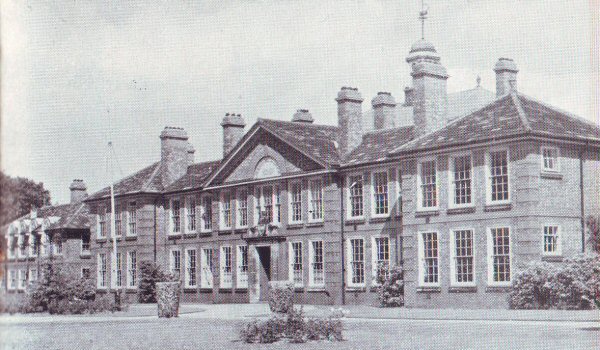
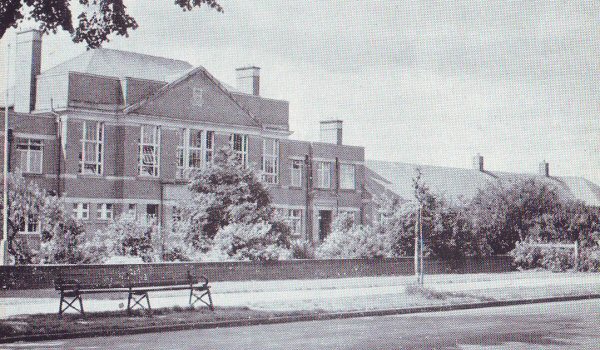
Further Education
Further Education in Goole is centred in the premises of the Secondary Modern School, though the facilities available at the Grammar School are also utilised and certain Day Classes are conducted in rented premises.
A sound training is provided in commercial subjects, and the industrial courses for boys lead on to specialised courses in engineering (mechanical and electrical), carpentry and joinery and building. An art course provides Instruction in lettering, posterwork and pictorial crafts. Opportunity is provided to proceed to advanced courses in engineering and shipbuilding at the Hull Technical College.
A wide variety of single subjects is available, mainly for adults, including art and crafts, cookery, instrumental music, languages, wood and metalwork, bee-keeping and horticultural science. It is not too much to say that any subject for which there is a reasonable demand can be provided.
A very successful Youth Club is run in connection with the Institute, for which a choice of indoor games is provided and a buffet caters for refreshment at cost prices. During the past few years the Institute has made remarkable progress, the number of individual students being now about 1,000.
Future Development:
The Development Plan submitted by the County Authority, under the Education Act, 1944, to the Ministry of Education, provides for large extensions to the buildings and playing fields of the Grammar School, considerable development in Modern and Technical Education and for the rebuilding of Junior and Infants' Schools to conform with the highest standards demanded by present-day educational theory and practice.
A Junior and Infants' School in Hook Road is now being built and will provide accommodation for seven classes (280 scholars). With further extensions, the total accommodation will be 560.
Primary Education:
The Primary Schools of the town are managed on behalf of the West Riding Education Committee by the Goole District Education Sub-Committee; particulars of the respective schools are given below:
| Name of School | Department | Recognised Accomodation | No. of scholars on role (Jan. 1950) |
| Goole Alexandra Street County | Jun. Boys | 350 | 229 |
| Jun. Girls | 280 | 201 | |
| Infants | 350 | 236 | |
| Goole Boothferry Road County | Jun. Mixed | 342 | 341 |
| Infants | 246 | 240 | |
| Goole Old Goole County | Jun. Mixed | 384 | 168 |
| Infants | 200 | 170 | |
| Goole Pasture Road County | Infants | 320 | 291 |
| Goole St. Thomas's Roman Catholic | Mixed & Infants | 273 | 197 |
| 2,743 | 2,073 | ||
Employment Exchange:
Aire Street
Fire Station:
Stanhope Street
Food Office:
Aire Street
Fuel Office:
Aire Street
Goole Chamber Of Commerce and Shipping (Incorporated)
This was founded in 1862; it is affiliated to the Association of British Chambers of Commerce, and became an incorporated body in 1937.
The Goole Chamber has a membership representative of all classes of commercial and industrial activity connected with the port, town and district. The Chamber has been active over a Iong period in sounding and focusing local commercial opinion on various questions which have arisen from time to time, both of a local and general character. In performing this important function, the Goole Chamber has become a vital part of the commercial structure of the Goole district, always having as its special aim the safeguarding and promoting of the trade and industry of the town and port, and encouraging outside commercial interests to take advantage of Goole's unique geographical position.
Goole Chamber of Trade:
Hon. Sec., N. Garside, Pasture Road, Goole. This very active society was formed in 1924, and has made great efforts to bring trading prosperity to Goole. It has conducted campaigns with the slogan "Shop in Goole," and regards itself as the link between trader and customer. It holds a Trades Exhibition in March each year.
Hotels:
Station, Boothferry Road; North Eastern, Boothferry Road; Lowther, Aire Street; Sydney, Aire Street.
Inspector Of Taxes:
Boothferry Road
Local Newspaper
Goole Times, Weekly, 3d
Ordnance Survey Maps:
One inch to one mile new popular edition. New Popular Edition Sheet 98. Quarter inch to one mile, Sheet 6. These are obtainable from booksellers, or, by post, from "Geographia" Ltd., 167 Fleet Street, London, E.C.4, who also stock all publications of Ed. J. Burrow & Co. Ltd.
Places of Worship:
Church of England - Parish Church of St. John, Church Street; St. Paul's, Weatherill Street; St. Mary's, Old Goole; All Saints Mission, Bridge Street. Roman Catholic - St. Joseph's, Pasture Road; St. Thomas of Canterbury, Moorland Road, Old Goole. Congregational - Hook Road. Methodist - Carlisle Street; Couper Street; Clifton Gardens; Dunhill Road; North Street.
Police Station:
Estcourt Terrace
Postal Information:
Head Post Office:
Victoria Street
Hours of Business:
Postal business, counter open, weekdays 8:30am to 6:30pm; Sundays 9am to 10:30am Telegraph business, weekdays 8am to 8pm; Sundays 9am to 10:30am Telephone Exchange, Open always
Collections and Deliveries:
Collections: Town Boxes - weekdays, 8am; 10:30am; 1:30pm; 3:45pm; 5:45pm; Sundays, one collection from all boxes between 4pm and 4:45pm. Deliveries: Letters, 7am and 11am. (ex. Sat.), 7am and 10:30am (Sat. only); Parcels, 9am, 2pm
Despatches:
Despatches are made at all times of the day to all parts of the country and the public should refer to the Head Office Window Notice for precise details.
Town Sub-Offices:
Boothferry Road, 9am to 6pm, Thursday, 9am to 1pm; Bridge Street, 9am to 1pm, 2pm to 6pm, Thursday 9am to 1pm; Old Goole, 9am to 12:30pm, 1:30pm to 6pm, Thursday 9am to 1pm; Westfield Avenue, 9am to 1pm, 2pm to 6pm, Thursday 9am to 1pm
Public Services:
Electricity: Supplied by the Yorkshire Electricity Board No. 6 (Hull) Sub-Area. Local Office: Mariners Street, Goole (Tel. 518)
Gas: Supplied by the North Eastern Gas Board
Water: Supplied by the Corporation
Railway Passenger Services:
Goole is on the British Railways' main line between Hull and Doncaster and is served by express passenger trains direct, or by connection, to all parts of the country.
Through express passenger services, many with dining car facilities, run to and from London (King's Cross) including "The Yorkshire Pullman" on which seats may be reserved in advance at Goole and King's Cross stations. Through express trains with buffet cars also connect Goole with Sheffield, Man- chester and Liverpool. Connections at Selby or Doncaster provide speedy services via the East Coast route to the North of England and Scotland, and at Sheffield connections are given to Nottingham, Leicester, the Midlands, the South and West of England and Wales. There are also good services to Leeds, Wakefield and the West Riding and Lancashire Centres.
Goole is, therefore, linked directly or in- directly with all important centres of population.
Road Distances:
Bawtry 25½, Ferrybridge 18½, London 182½, Doncaster 22½, Hull 27½, Market Weighton 16½, Selby 14½.
Telephone Kiosks:
Victoria Street (outside G.P.O.); Boothferry Road (East side of railway crossing); Boothferry Road (opposite Carlton Cinema); Pasture Road (outside British Legion Club); Hook Road (nr. junction of Hook Road and Marshfield Road); Swinefleet Road (Hunt's Corner); Swinefleet Road (near St. Mary's Church); Railway Station (enquiry office on station); Aire Street; Queensway; Grange Road; and Airmyn Road.